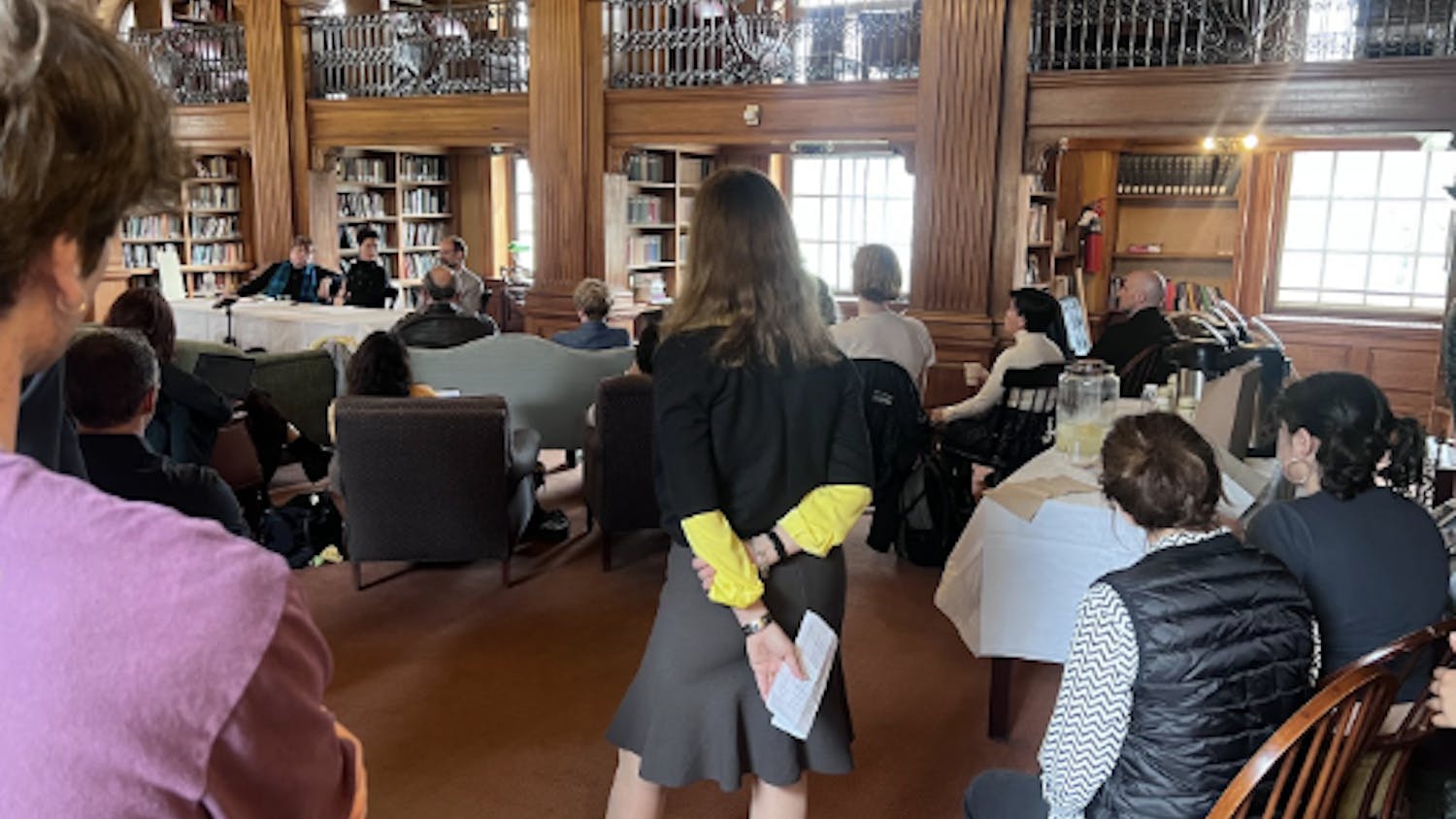"To meet others is to be astonished at the differences and then to try to search for the similarity," Japanese theatre director Satoshi Miyagi claims, "and then at the end to be astonished at the similarity."
Miyagi leads Ku Na'uka, the Japanese contemporary theater company that staged a production of the innovative Kyoka Izumi's play "Tensho Monogatari" ("The Castle Tower") in Moore Theater last night and Wednesday.
The company's productions are based on bunraku, a type of Japanese traditional puppet theater where the lines are delivered by a narrator and the actions by a puppet, separating movement from language. There is one narrator for each character, providing the voice to the drama played out by each actor. Miyagi calls this technique "logos and pathos."
The story enacted here, a fascinating type of supernatural fiction, is a feudal love story enmeshed with the fantastical world of ghouls and witches. These demons wish to eat the head of the samurai whose love, the ethereal white-faced doll princess, resides in the castle. Both the samurai and the princess are under the protection of a dragon, swayed to dance in the magnificent final fight.
In last night's production, the production's exceedingly stylized form of love was expressed through quiet fluid motion and mask-like faces. The demons' raw desire to dine on the samurai warrior were also enacted through a stylization of movements, abstracting the story further into a world of signs.
Izumi (1872-1939) was a pioneer in an effort to "re-enchant" the Japanese language through magic. He is described as having "planted a garden of peonies that flourished in the anemic desert of Japanese letters."
A response to Japan's desire to become a modern power, this strange yet gorgeous work was perfectly realized by Ku Na'uka's method, which is also a reaction to the modern world. Ku Na'uka relishes the separation of body from voice as a modern separation of experience and language.
"In the conventional method of theatrical realism, the words actors speak, and the plot, are directly linked with their movement," Miyagi says.
"Probably, in ancient times, these two were connected more directly when people expressed themselves more simply. But life now is a lot more complex and the way of using words has become much more multilayered, so in life our words and actions have become more remote from each other."
It is the incongruity onstage that ironically creates a familiarity. Though that may seem contradictory, the style's goal is to convince the audience to re-enter life through a different language and vision -- to allow the audience to enter into a dream world.
The exceptional beauty of the movements and the slow unraveling of plot combined last night with the lavish costumes and puppets to create a real pleasure for the eyes. Though the play is heavily influenced by theoretical motivations, the company's deep interest in the supernatural and magic of storytelling helped make it a visual feast.



